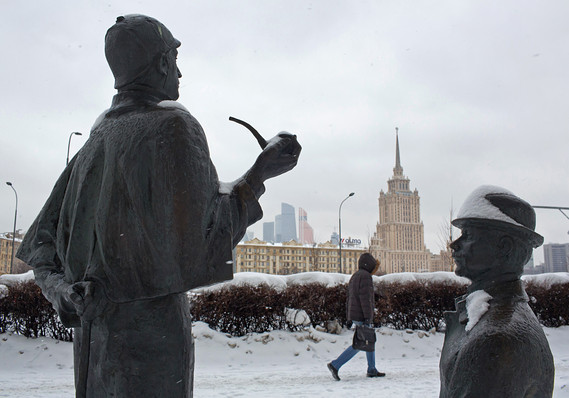 Bloomberg News/Landov
Bloomberg News/Landov
It is a case that would make Sherlock Holmes proud.
Growth in the first quarter smashed expectations, fueled in part by strong inventory building. According to the government, $32 billion of goods were added to inventories this quarter, or $128 billion annualized.
Read: Economy grows 3.2% in first quarter, in report showing strength and short-term boosts
This stockpiling of goods boosted first-quarter GDP growth by about 70 basis points and helped propel growth to a 3.2% annual rate, well above forecasts.
The problem is that it is not at all obvious where these inventories came from. Goods have to come from somewhere, either produced by domestic firms or imported from abroad.
The mystery is that both production and imports fell in the first three months of the year, according to government data.
“You can’t stockpile what you do not import or do not produce,” said Robert Brusca, chief economist at FAO Economics.
The Fed reported last week that industrial output slipped at a 0.3% annual rate in the first quarter.
Read: Industrial production weakens further in March
And the government’s GDP report estimates that imports fell 3.7% in the first three months of the year.
The one other explanation — that consumption fell sharply enough to leave businesses with unexpected unsold goods — also doesn’t fit the evidence, Brusca said.
Consumption did not fall faster than industrial production or imports to generate any surplus, he said. To be sure, spending on consumer durable goods fell 5.3%, the biggest drop in 10 years. Business spending on equipment was also weak.
“Any way you slice it, this GDP report…is an apparent mess,” he said.
One possible culprit is Boeing BA, -0.53% , which could have some unsold 737 Max 7 airplanes. But these have a list price of $100 million. That doesn’t account for $32 billion in inventories.
Another possibility is that the government tinkered with the report to try to solve an ongoing problem of “residual seasonality” that tended to push down first-quarter growth estimates, Brusca said.
The White House had a few different explanations for the discrepancy.
Top White House economic adviser Larry Kudlow said the inventory build was mainly in autos, and wouldn’t be a problem because consumers would be opening their wallets.
Another White House economist, Kevin Hassett, seemed to suggest that the extra production wasn’t picked up in the Fed’s report on industrial production.
“People built new factories last year. This year they’re turning them on and are beginning to produce output. In the first quarter, I think a lot of that new output from the new factories went into inventories,” Hassett told CNBC.
The inventory mystery has key implications for the outlook. If the inventory build is real and unwanted, it might slow production.
On the other hand, if it is somehow revised away, growth in the second quarter might not be as weak as some expect. All this when Fed officials have stressed they are going to be more dependent on the data in setting interest rates.







